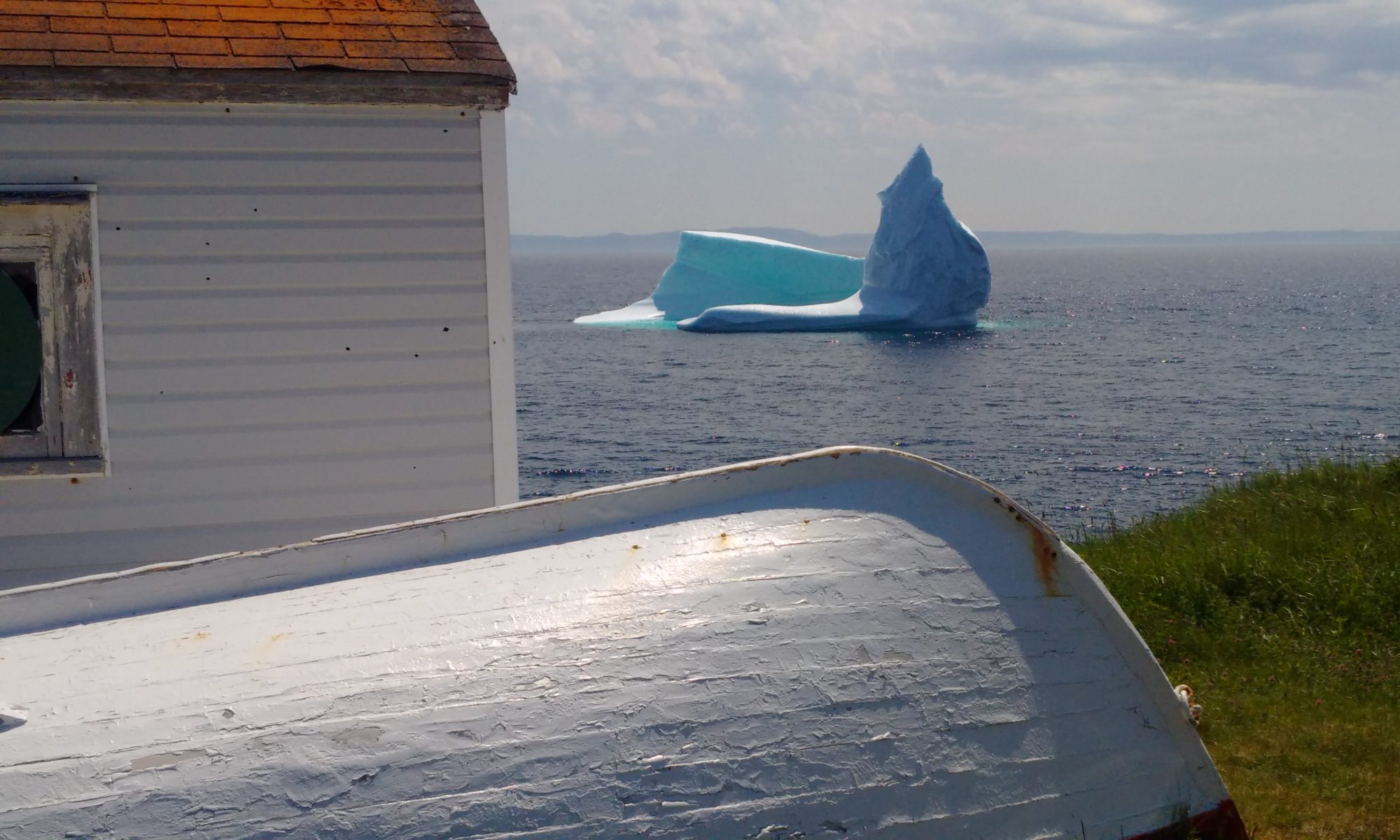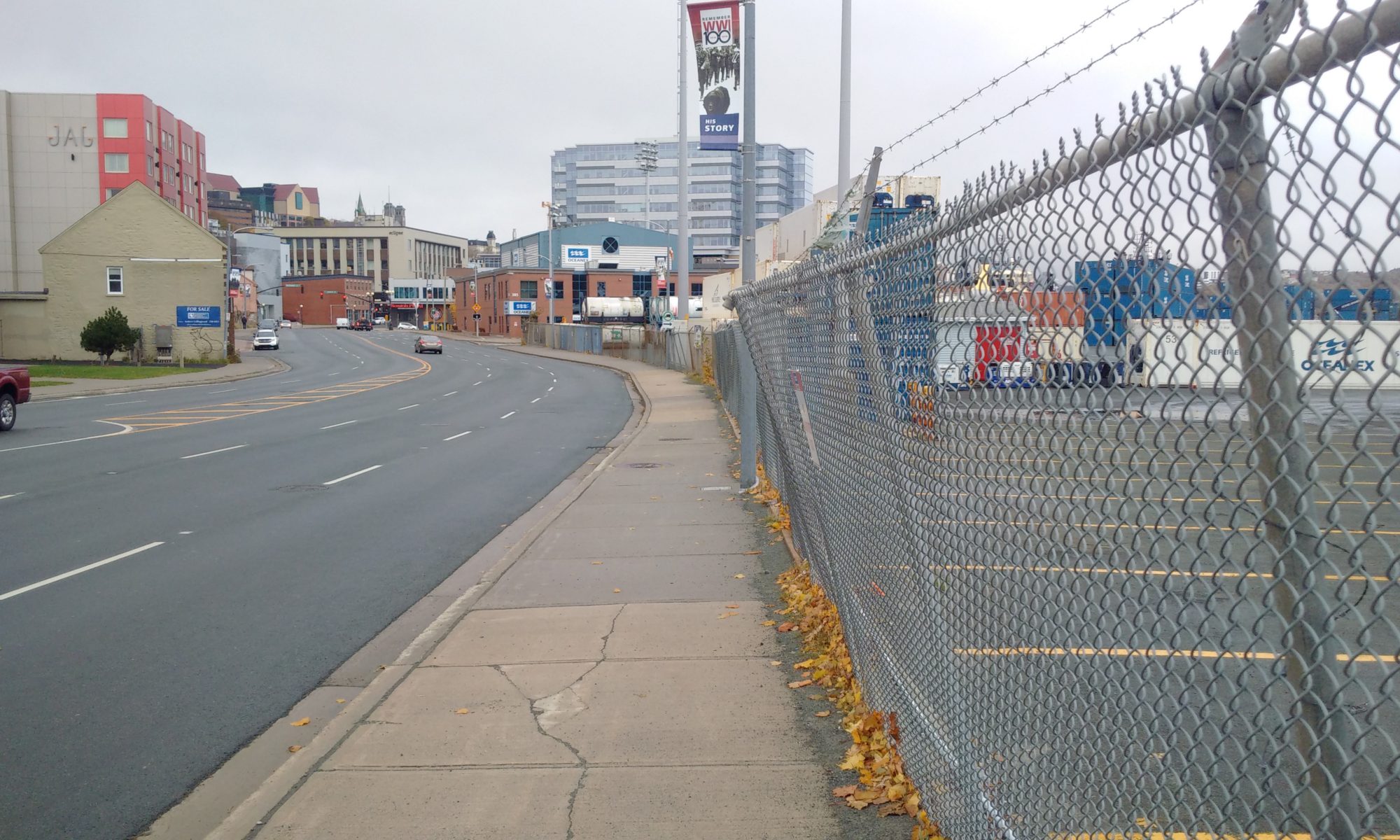Having been born and raised on Springdale Street in the heart of downtown St. John’s, I have an affinity with that part of town. Throughout the 90’s, I bemoaned the sad state of the former Horwood Property which was a vibrant sawmill and DIY business between Water and Duckworth for a century. So I was thrilled when Fortis asked me to design their new office tower on that site. I viewed it as a renewal project.
Now,with the Convention Centre and JAG Hotel completed, the Hilton Garden Inn under construction and the Centre of Hope (Salvation Army) slated to begin construction this spring, that part of the downtown may soon appear to be rejuvenated. In fact, there may be some hope that the Railway Museum and the various interesting and aspiring shops on the north side of Water Street west can be brought into the continuum of the downtown. This would extend the reach of the urban experience beyond the Hamilton Avenue ramp.
Of course there is little that can be done about the sad termination of Pitts Memorial Drive and the hideous overpass that our city fathers at some time must have considered essential back in the 70’s. The dark and dreary atmosphere under the massive concrete trestle shouts “no man’s land” to the pedestrians who forge through it. The message “You are entering/leaving Downtown” is as tacit as the drip, drip, drip of foreign fluids seeping through the expansion joints of the overhead infrastructure that launched us into the modern era.
A modicum of wayfinding would be helpful on the southern approach. There is a marvelous little jaunt that safely guides the pedestrian away from the roaring four lane traffic of Water Street hidden alongside the ramp abutment. The graffiti there is equal to a Rick Mercer rant – artistic, communicative and in-your-face. It brings joy to the urban experience. It is a quiet gallery so visually appealing that it can slow your gait and distract your worry. But it is not apparent that this is the way to walk. The obvious route eastward takes you out onto a peninsula that tapers into vehicles coming off the Pitts ramp – many of whom have not yet reduced their speed from 90 kph. Your only safe choice here (also uncommunicated) is to cross Water north towards Hamilton.
Walking west (imagine you are a tourist wanting to visit the Railway Museum) there is also no obvious indication of where you should go, safe from traffic.
And at night, well, perhaps best stay away from this back alley altogether.
These issues need to be addressed by the City. Someone has dropped the ball. My advice to councilors: get out and walk this strip if you haven’t already done so.
As for the container laydown yard that defines the southern boundary: it is all-pervading. It is this context of the “working harbour” discussion that is the rationale for some of the most abysmal planning decisions in this town – from the harbour fence (which could not have been more offensive had it been replete with razor ribbon topping) to the municipal sewage treatment plant (for which the engineers felt that the stepped intrusion into a thousand feet of sheer vertical rock would not be at all obtrusive). We have been conditioned to believe that a container transshipment facility located on some of the most valuable real estate in the urban core is perfectly acceptable.
It is doubtful that the Oceanex operations will be moved anytime in the foreseeable future (to Bay Bulls where it should be in order to eliminate the ridiculous amount of truck traffic and related road destruction in the city). It is even less likely that any land in this area will ever be earmarked for a city library or arts centre – which would reinforce the downtown west end as a destination. Again, the “working harbour” default discussion.
Council, in decades of “planning”, just won’t go there. And even if all our goods were being delivered via hyperloop, Oceanex would circle the wagons around its sixty acres of prime real estate and defend it to the last ro-ro.
In any other city, a transshipment facility that borders on the downtown would be required to present a softer edge. There would be a set-back of several metres. There would be a requirement for landscaping with a grassy verge and trees. And there would almost certainly be a requirement for opaque screening. (And that huge electronic advertising billboard would never have seen the light of day! What in God’s name were they thinking?)
A barbed-wire topped, chain-link fence in chronic disrepair would not be acceptable, even in the roughest of boroughs. And permitting sixty foot trailers to back into this fence, unrestrained by any sort of guard, effectively bending it over onto a public sidewalk, would attract outcry and protest.
So why is it that St. John’s so tolerant? The City requires landscaped setbacks for virtually every new development. And why has one of our most successful tenants chosen to present such a least successful image to the world?
The view at the bottom of Springdale Street should be inviting and directional. A discernable boundary does not need to hide or disguise the workings of the container port – that is impossible anyway.
What is possible is the installation of a landscaped verge with an attractive wall or fence, and an exterior lighting scheme would facilitate a convivial pedestrian corridor linking the downtown core to Water Street west. The entire boundary, from the Pitts Memorial ramp to the hub of the harbour, needs fixing. It is broken.

